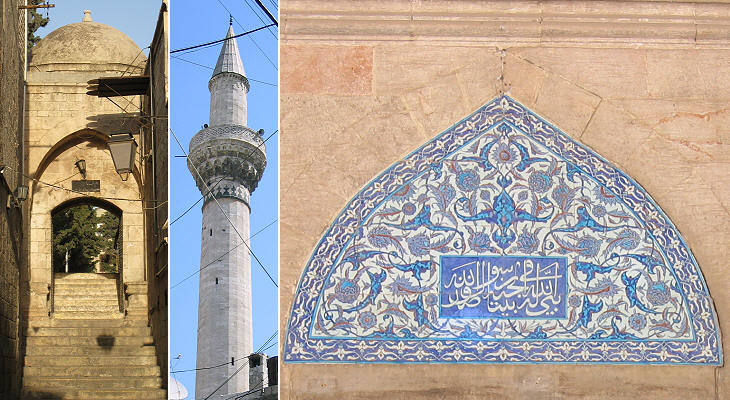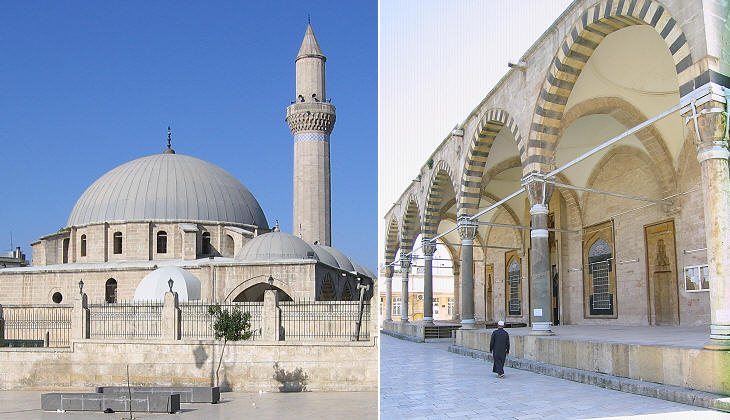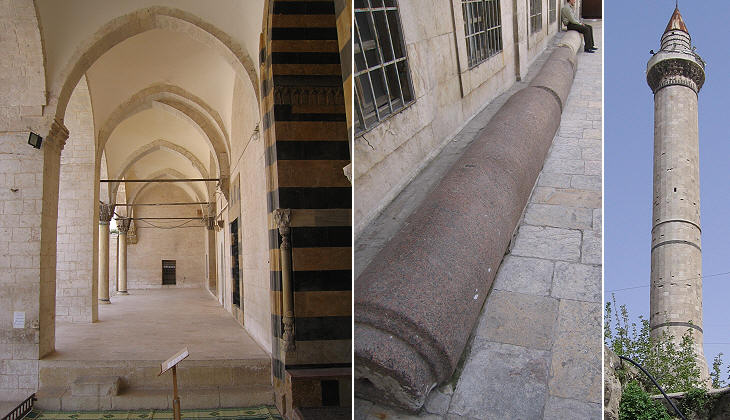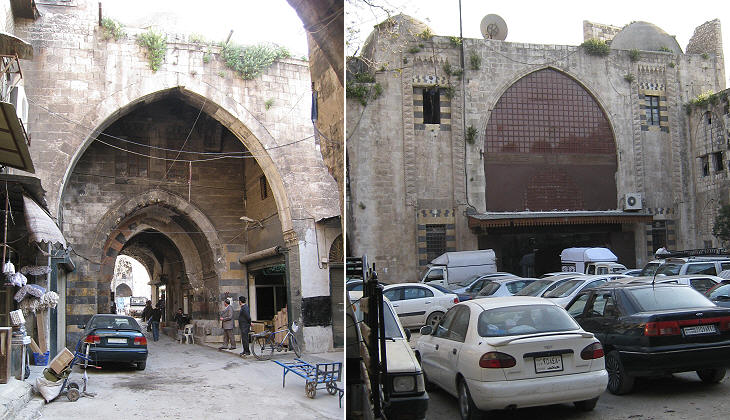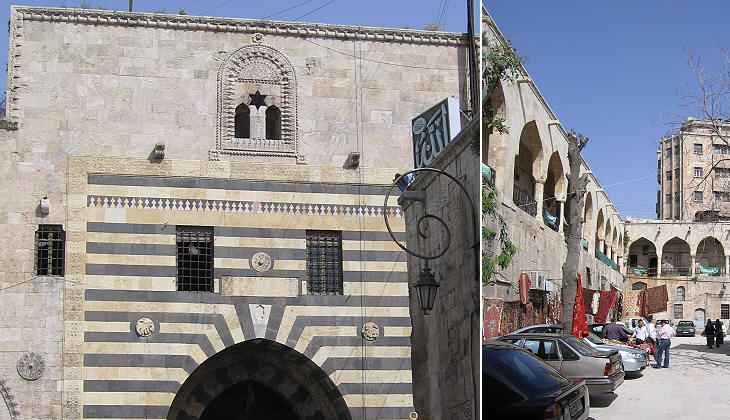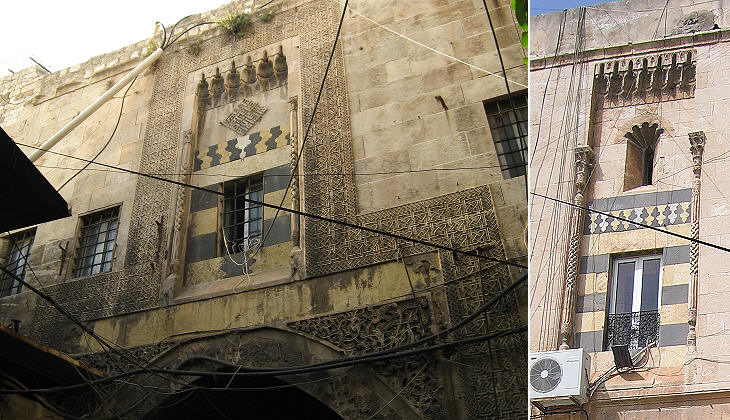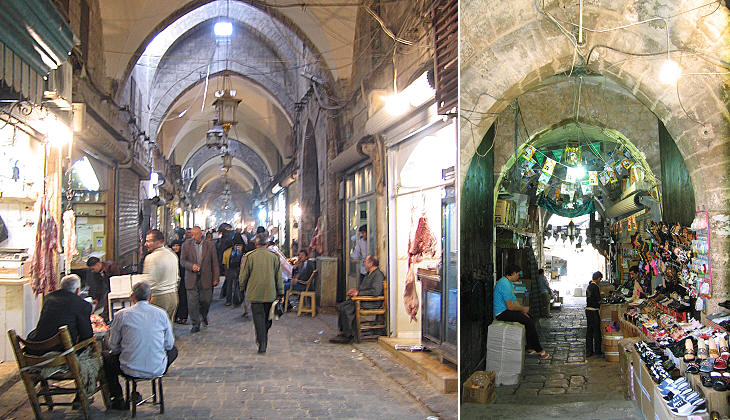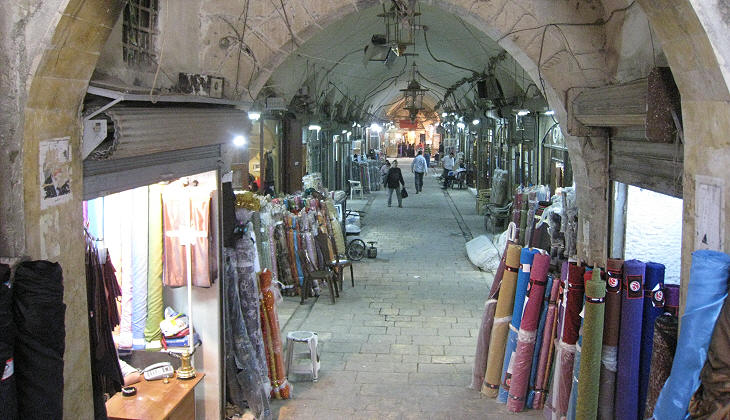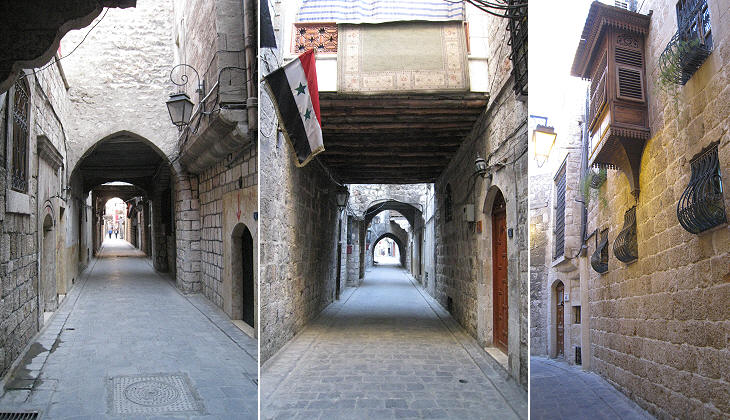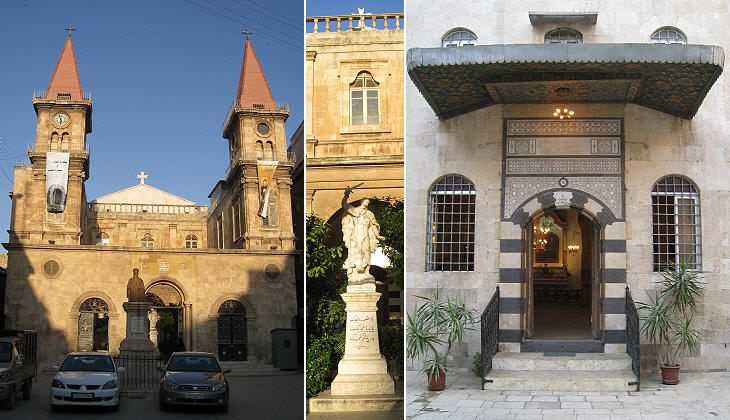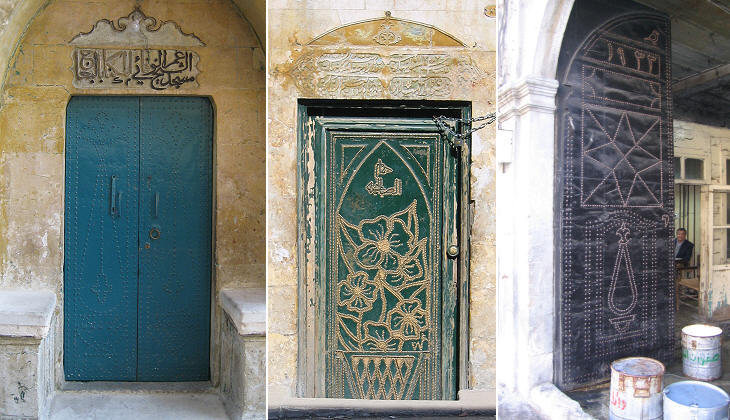  What's New! Detailed Sitemap All images © by Roberto Piperno, owner of the domain. Write to romapip@quipo.it. Text edited by Rosamie Moore. Page added in April 2010. |
 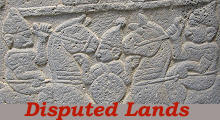 - Aleppo - Ottoman period - Aleppo - Ottoman period(relief at Karatepe) In 1514 the Ottoman Sultan Selim I defeated the Persian Safavids at Chaldiran and conquered their capital Tabriz; in 1516 he waged war on the Mamelukes and he entered Aleppo in triumph, welcomed by its inhabitants; he then moved southward and conquered Damascus and in the following year Egypt.
Sultan Suleiman I, Selim's son, conquered Mosul and Baghdad and during his reign the Ottoman Empire reached the Persian Gulf. Aleppo became a key trading station along the east-west and north-south routes of a large empire. Because of the help given by the inhabitants during the Ottoman conquest, the new rulers favoured the expansion of Aleppo and embellished it with new monuments such as Al-Adiliye Djami in the commercial quarter of the city.
Khosrowiye Djami was the second large Ottoman complex in Aleppo; it was built near the entrance to the Citadel (see page one), the traditional seat of authority of the city; it is traditionally attributed to Mimar Sinan, the greatest Ottoman architect, although at the time the complex was built he had just been appointed supervisor of all imperial buildings. The large dome and the imposing portico are typical of Ottoman architecture.
The Arabs called the Ottoman style tarz-i Rum because for them Constantinople was still a second Rome; the new buildings had also a political implication in the sense that they were a visible sign of the power of the centre of the empire; Aleppo became the capital of a large vilayet (province/region) which included several other important towns such as Antioch, Mahras, Antep and Urfa. By the end of the XVIth century Aleppo was the third largest city of the empire after Constantinople and Cairo.
The Ottoman patronage in Aleppo was not limited to mosques and other religious buildings, but it was also aimed at providing the city with the facilities needed because of its commercial importance; several large khans were built for the caravans; they were specialized by trade or they belonged to the different European or Christian communities which dominated trade in the Ottoman Empire; a Venetian consul resided in one of these khans until the 1797 fall of the Republic.
The Ottoman buildings of Aleppo were not copies of those of Constantinople; Khan al-Wazir has the structure of a traditional Ottoman khan, but its decoration reflects patterns which prevailed before the Ottoman conquest (see page two).
The khans are still the centre of trading in Aleppo, at least for the people who come from the hinterland of the city and who are accustomed to a traditional way of purchasing; their current usage makes it difficult to appreciate some of their architectural features; in general a section of the upper storey was reserved to the administrator of the khan and its windows were decorated.
In the early XXth century the khans lost their function as stations for caravans and they were turned into warehouses and shops, thus becoming an expansion of the souks, the markets of the city which were specialized by trade; the main souk of Aleppo crosses the old city from Bab Antakya, its western gate, to the Citadel; it is a narrow covered street which receives light from openings in the domed ceilings.
The events which followed the end of WWI and chiefly the dissolution of the Ottoman Empire had a negative impact on Aleppo; not only it lost its role as the key commercial centre of a vast region, but its vilayet was greatly reduced; Mahras, Antep, Urfa and eventually also Antioch became part of the Republic of Turkey. France was given a mandate by the League of Nations to administer Syria; although Aleppo was the major city of the new country they preferred Damascus as the capital. In very recent years the political frictions between Turkey and Syria have been replaced by an intense cooperation which has led to commercial agreements and the development of joint ventures; these changes may give Aleppo the chance to regain its previous importance.
In Constantinople the Greek Orthodox and the Jews lived inside the ancient walls of the city, whereas the other Christian communities lived in Galata; in other Ottoman towns such as Rhodes and Ioanina only the Jews were allowed to live inside the walls; in Aleppo the various Christian communities (the main ones being the Maronites, the Syro-Orthodox, the Syro-Catholics and the Armenians) lived in Jdeide (new town), a neighbourhood located outside the northern gate of Aleppo; the gate was called Bab al-Yahoud, the Gate of the Jews, because the Jews lived nearby but inside the walls. Jdeide has retained several historic houses (some of which have become boutique hotels or restaurants) and it is still largely inhabited by Christians, although the wealthiest ones live today in the elegant quarter of Al-Aziziah. After the events of 1948 the Jews left the country and their synagogue was greatly damaged; Bab al-Yahoud was renamed Bab an-Nasr (Victory Gate); the actual gate does not exist any longer.
In the XIXth century the Ottoman government lifted restrictions on the size and outer appearance of non-Muslim halls of prayer; the Christian communities built large new churches, some of which were based on western patterns, whereas others followed the local tradition.
The image used as background for this page shows an inscription on glazed tiles in Khosrowiye Djami. Go to: page one - the Citadel and the walls or to page two - from the first Arab conquest to the Mamelukes. Move to Introductory page Tarsus Lampron Adana Sis (Kozan) Laiazzo (Yumurtalik) Karatepe Yilanli Kale Gaziantep Kahramanmaras Kilis Birecik Cyrrhus Ain Dara Sanliurfa Harran Nemrut Dagi Harput Diyarbakir Mardin Silvan and Malabadi Koprusu Map of Syria with all the locations covered in this website  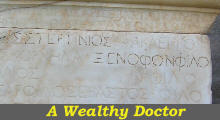 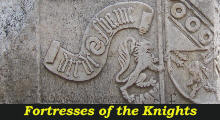  |
